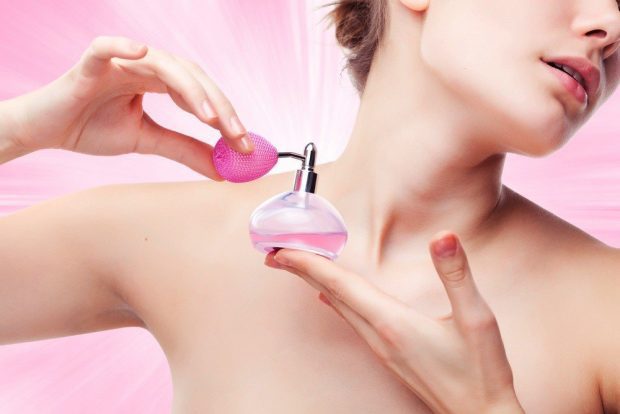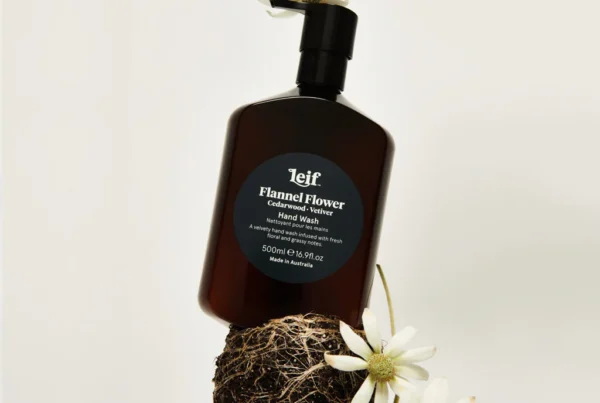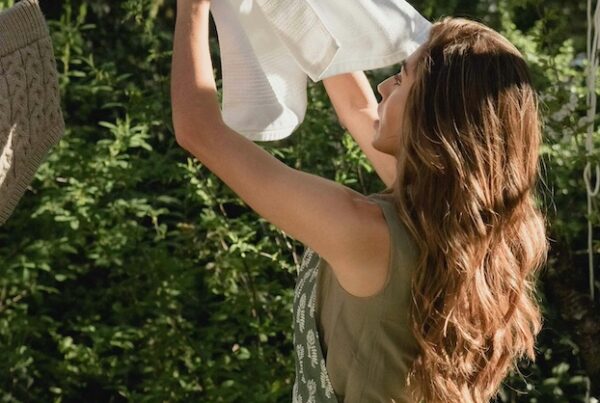The entrepreneurial world is a rich tapestry of opportunity and innovation. The beauty of the fragrance industry lies not just in the intoxicating array of scents but also in its potential to be a flourishing, sustainable business. And trust me, people, when it comes to perfume, sustainability isn’t just about going green. It’s about ensuring your venture leaves a pleasant, long-lasting impression, much like the musky, earthy base notes that linger long after the wearer has left the room. Longevity Live Paid Content.
What you should know
From understanding the fine line between ‘eau de toilette’ and ‘eau de parfum’ to creating environmentally-friendly concoctions that won’t make Mother Earth sneeze, this article is your comprehensive beginner’s guide. It’s a grand tour across the nuances of sustainable sourcing, ethical production, creative branding, and everything else you need to become the nose that knows.
As we navigate through this fragrant labyrinth together, remember this—building a sustainable fragrance business isn’t a sprint; it’s a marathon. A rewarding marathon that will leave you, and those lucky enough to smell your creations, forever changed.
Grasping Sustainability’s Influence in the Fragrance Industry
When talking about perfumes, this means considering sustainability at each step of the production process, from finding raw materials to manufacturing, choosing packaging materials, waste management, and so on.
The year 2020 was like hitting the reset button. It was a year filled with changes and uncertainties but also self-reflection for many of us. Being cooped up at home led to a surge in the importance of well-being and a rediscovered focus on scents and how they affect us on a deeper, more holistic level.
Looking at market trends, it’s evident that 2020 sparked a renewed passion for fragrances. Moreover, it encouraged a significant shift towards sustainability in the fragrance industry, with more people choosing natural aromas and eco-friendly ingredients.
Indeed, a report by Allied Market Research tells a fascinating story
It states that ‘the worldwide market for fragrance ingredients, which was worth $13.6 billion in 2019, is forecasted to hit $16.1 billion by 2027. This represents a compound annual growth rate (CAGR) of 3.8% from 2020 to 2027. The escalating demand for personalized, natural, and environmentally-friendly perfumes, along with a rise in living standards, is predicted to fuel this market growth.’
But the story doesn’t end there. The report further elaborates: ‘Among the different types of ingredients, natural ones are projected to experience the fastest growth, with a CAGR of 4.3% from 2020 to 2027. This is attributed to consumers’ preference for essential oils’ therapeutic benefits in aromatherapy and an uptick in expenditure on beauty and personal care products.’
Finding Sustainable Raw Materials
There are so many different natural and synthetic ingredients needed to craft a good perfume. To aim for sustainability, these materials need to be sourced responsibly. Sustainable raw materials adhere to certain standards like preserving biodiversity, causing minimal environmental harm, and ensuring fair labor practices. These practices not only protect our planet but also promote better relationships within the industry.
Prioritizing Sustainable Production Practices
A sustainable fragrance business should use energy-efficient machinery and consider progressive practices like zero-waste production and the use of renewable energy. Managing water usage and chemical waste during production is also vital to sustainable production methods.
Here are some key aspects:
- Energy-efficient machinery. This involves using machines that consume less power or those that can run on renewable energy. You’re aiming for machines that consume less energy but also work by producing little to no greenhouse gas emissions.
- Sustainable raw materials. Choosing ingredients that are sustainably sourced, meaning they are renewable, cause minimal harm to biodiversity, and are procured under fair labor conditions. These materials are usually organic essential oils, natural extracts, and biodegradable synthetic ingredients.
- Water conservation. The production process should be designed to minimize water usage. This could involve recycling water or using technologies that require less water in the production process.
- Waste reduction. Sustainable production aims at minimizing waste, which involves a zero-waste policy where all by-products are used, recycled, or composted. It could also mean using production techniques that create less waste in the first place.
- Responsible for disposal of chemical waste. Crafting perfumes also involves chemical waste, which can be harmful to the environment. Sustainable practices necessitate the responsible disposal and treatment of such waste to make sure it doesn’t harm the environment.
- Packaging: Sustainable production also involves the end product. The packaging should be either recyclable or biodegradable to reduce the environmental impact of the product, and this is a crucial component of any sustainable business. By avoiding excessive packaging, businesses can significantly cut down on their waste. Pairing this with carbon-neutral delivery options can further reduce your business’s carbon footprint.
Building Trust through Transparency and Customer Engagement
Today’s consumers appreciate honesty and prefer to support businesses that are transparent in their operations. By clearly communicating your sustainability efforts, ingredient sources, and production processes, you encourage transparency and customer engagement. This openness attracts loyal customers and positive referrals, which are critical for the growth of your sustainable fragrance business.
The Need for Strategic Business Planning
Building a sustainable fragrance business involves more than just adopting green operations. It necessitates detailed financial planning and strategic decision-making. Develop a thorough business plan where you will define everything in detail, including pricing, market research, financial projections, branding, and distribution. Aligning your sustainability goals with your business objectives will yield a strategic business plan that encourages long-term success.
This encompasses:
- Market research
- Sustainable product development
- Sustainability compliance and certifications
- Eco-friendly packaging
- Pricing strategy
- Green marketing strategy
- Sustainable distribution methods
- Partnerships and collaborations
- Financial projections
- Risk assessment
- Continuous improvement
A strong strategic business plan not only helps in setting a clear direction but also in attracting investors, especially those who prioritize green businesses. Your commitment to sustainability should be integral to your business strategy, reflecting every aspect of your operation.

Mike Laptev/Shutterstock
Boosting Credibility through Partnerships and Certifications
Partnering with well-known and respected organizations that share your sustainability ethos signals to customers that your business is committed to sustainability and that your practices have been endorsed by organizations they trust. That’s what Clean Reserve did, for example.
This fragrance brand partnered with sustainable sourcing partners who ensure all their ingredients are responsibly harvested and do not harm the ecosystems from which they are sourced. This has greatly boosted its credibility as a truly sustainable brand.
And when it comes to the benefits of certifications from reputable bodies in the eco-friendly world, we can look at the example of Henry Rose, one of the first fragrance brands that became both Environmental Working Group (EWG) Verified and Cradle to Cradle Certified. These certifications are recognized globally and provide assurance to consumers about the sustainability and safety of their products.
Staying Ahead through Investment in Innovation and Research
To remain competitive in the sustainable fragrance business, continuous investment in innovation and research is key. Exploring new sustainable materials and production techniques can give you a unique advantage over your competitors. This ongoing investment also lets you consistently introduce new, exciting unisex, men, and women’s perfumes to your customers.
Embedding Sustainability as a Core Brand Value
For a sustainable fragrance business, sustainability should be more than just a corporate responsibility or marketing tactic. It should be a fundamental brand value guiding every business decision, from sourcing to sales. Genuine commitment to sustainability not only lowers environmental impacts but also appeals to the growing number of consumers who value corporate sustainability.
Defining Your Place in the Market
The fragrance industry is diverse, and identifying your niche is crucial for brand distinction. Whether it’s catering to niche markets like vegan fragrances, hypoallergenic scents, or exclusive, limited-edition luxury fragrances, providing unique products can attract a dedicated customer base. Keep an eye on industry trends and adapt to changing consumer behavior to continually refine your product offerings.
Leveraging the Power of Digital Marketing
The world has gone digital a long time ago, and effective online marketing strategies are vital for the success of your fragrance business. Don’t think you can succeed, and avoid using social media platforms, email marketing, and search engine optimization (SEO) to reach your target audience. You have to share your sustainability message and promote your unique products somehow, and this is the best way to do it.
Digital marketing strategies such businesses can rely on include:
- Search Engine Optimization (SEO). Make sure your website and blog content are optimized with keywords related to sustainable fragrances to help potential customers find your brand when they use search engines.
- Content marketing. Create engaging and informative content (posts, infographics, eBooks, or videos) that positions your brand as a leader in the sustainable fragrance space.
- Social media marketing. The best platforms for visually-oriented industries are Instagram, Pinterest, TikTok, and YouTube. The majority of your potential buyers are most likely there, and you choose your main platforms to start sharing your brand story and talking to people.
- Influencer marketing. Partner up with influencers who are known to respect the ethics of sustainability because that also aligns with your brand’s values. These influencers can review your products or create sponsored content that introduces their followers to your brand.
- Email marketing: Build a mailing list and send out regular newsletters and updates. It’s an excellent way to keep your brand top of mind, share news about product launches, and inform your audience about your sustainability initiatives.
- Sustainability directories: List your business in online directories and marketplaces dedicated to sustainable products. This will help you reach consumers who are specifically looking to buy sustainable products.
- User-generated content. People like it when their favorite brands post the content they make. Encourage your followers and customers to share their experiences with your fragrances on their own social media channels, and then collect and repost. It’s a powerful form of word-of-mouth marketing.
Remember, effective online marketing involves a mix of these strategies tailored to your brand’s specific goals, target audience, and resources. Monitor your results and adjust your strategies as needed to continually improve your online visibility.
Prioritizing Customer Service and Retention
Customer service is always super important for a business. It’s like being a great host at a party. If your guests (customers) feel welcome and enjoy their time, they’ll want to come back to your future parties (buy more products or services). They’ll also tell their friends (potential new customers) how great your party was.
For sustainable fragrance businesses, establishing an effective customer service strategy can lead to more repeat customers, which is something every business dreams about. Offer the best possible post-purchase support, always address customer questions, and establish an easy return and refund process. And don’t forget to collect and analyze your customer feedback to find out where you can make improvements.
The Importance of Continuous Learning and Adaptation
The world of sustainability and what customers expect is always on the move. The key to keeping your finger on the pulse is the freshest sustainability practices, the newest trends in the fragrance scene, and ever-changing consumer behavior.
Being natural doesn’t necessarily mean being sustainable. In fact, this misconception is a significant hurdle in our journey towards a cleaner and more eco-friendly planet.
When it comes to fragrances, it’s critical to look deeper into the ingredients—especially botanicals at risk of depletion—to ensure a brand’s claims of being ‘natural’ aren’t merely an act of greenwashing, thereby exacerbating sustainability issues. Just like endangered animals, endangered plants are a serious global concern.
It’s best to support brands that consciously avoid exploiting endangered plants and animal species.
The sustainability revolution in the fragrance industry stems from brands investing in new technologies to extract essential oils and create safer, cleaner synthetic substitutes. Today, fragrance and ingredient firms are developing sustainable sources of natural ingredients that aren’t endangered.
Concurrently, they are also making efforts to sustainabilize their synthetic ingredient production. This blend of clean synthetics and natural extracts seems to be the most sustainable path forward. It also provides customers with a reliable way to gauge the actual sustainability and ethical standards of their chosen products.
Who is the author?

Alice Reilly
Alice Reilly, a lifestyle blogger, and digital marketer, has a discerning nose for the exceptional. With expertise in the digital landscape, Alice has artfully fused her passion and profession, inspiring readers around the globe.
Whether you’re seeking the perfect scent or engaging online strategies, Alice offers unique insights that illuminate and excite. Join her journey to savor the extraordinary in the everyday.





![women [longevity live]](https://longevitylive.com/wp-content/uploads/2020/01/photo-of-women-walking-down-the-street-1116984-100x100.jpg)










